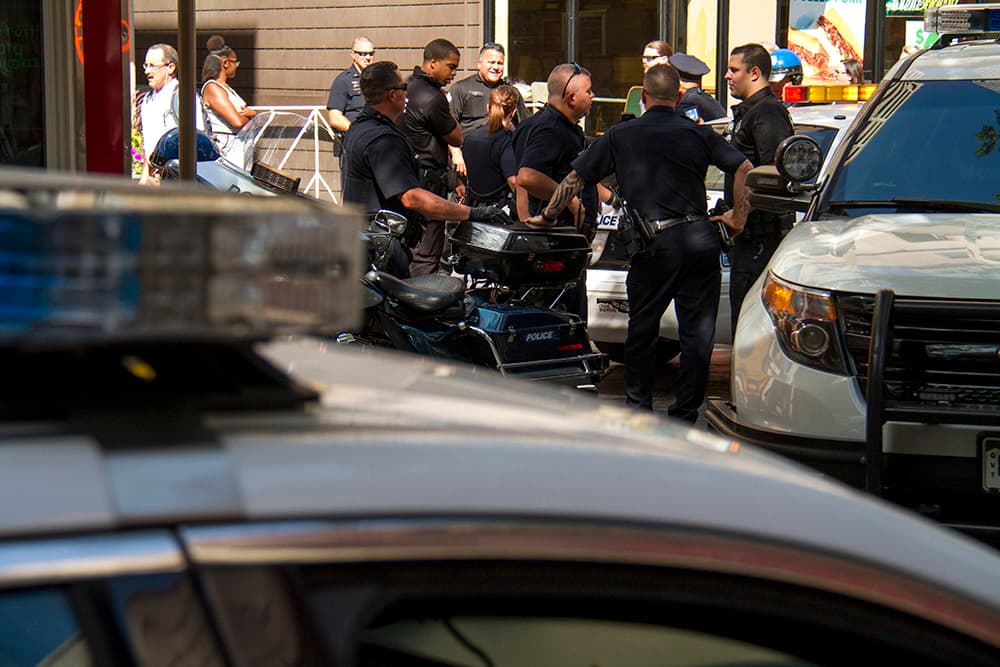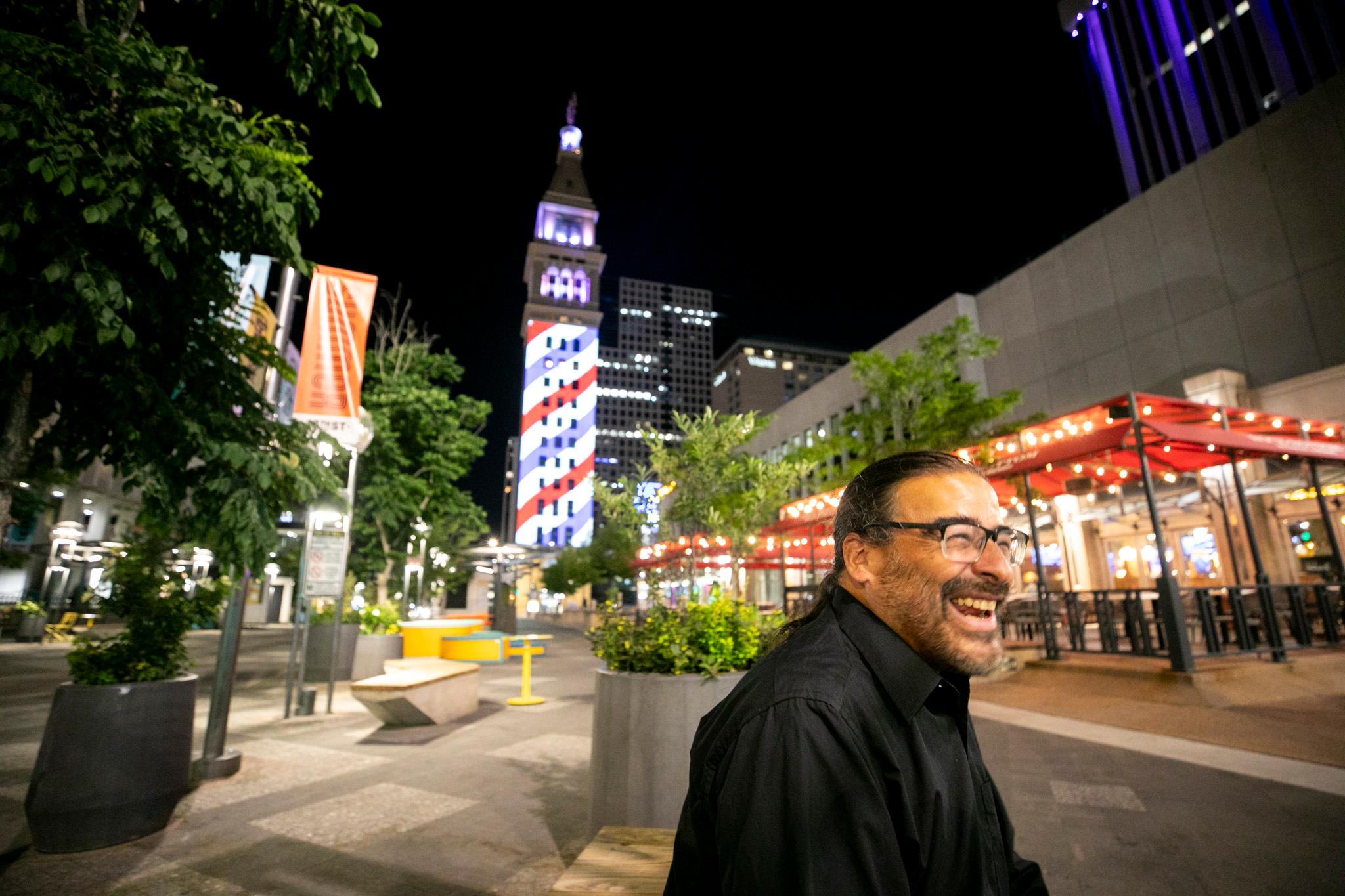
Denver Police Chief Robert White today introduced a draft for the department's new use-of-force policy and asked for public input.
At a press conference this morning, which the department live-tweeted, White spoke about being accountable to the Denver residents who pay police.
"Citizens have raised the bar as to what they expect from their police department and we have to raise the bar, too," he said.
White also said the new policy would include ethics training and encourage officers to slow down and think critically.
The policy draft's statement of purpose notes that "The concept of de-escalation (when circumstances permit) is a core component and philosophy. Officers will avoid demeanor, tactics, and actions that unduly jeopardize safety or hinder successful incident resolution."
And much of the language focuses on just that. Under the section for force guiding principles, it says:
An officer’s conduct or actions may influence the level of force necessary in a given situation.
...
Unnecessarily or prematurely drawing or exhibiting a firearm limits an officer’s alternatives in controlling a situation, creates unnecessary anxiety on the part of community members, and may result in an unwarranted or accidental discharge of the firearm. An officer’s decision to draw or exhibit a firearm will be based on the tactical situation and the officer’s reasonable belief there are indicators of a substantial risk that the situation may escalate to the point where deadly force may be justified. When an officer has determined that the use of deadly force is not necessary, the officer will, as soon as practicable, secure or holster the firearm.
The policy also outlines officers' responsibility to provide medical treatment at a scene and "the duty to exercise reasonable care for the prisoner's health and safety" once in custody, including a section about the ingestion of contraband/dangerous substances.
It concludes a chart with "a general range of response options based on an individual's type of resistance." It escalates from psychological intimidation -- for which responses include decision making, physical presence, voice control and deescalation -- to aggravated active aggression -- for which responses include the aforementioned measures, plus hand control/restraint techniques, chemical agents, RIPP, less lethal munitions, taser, strikes and impact weapons and, finally, deadly force.
The policy is at least two months in the making.
The department announced that it would give the policy an overhaul in late October of last year, responding to increasing distrust and tension between citizens and police in Denver and across the country.
At the time, White told the Denver Post, “I’m of the opinion it’s just not good enough for officers to take legal actions, but they also need to make sure those actions are absolutely necessary. That’s where we are going.”
Here's how the new policy addresses Campaign Zero provisions.
Earlier in October of last year, Campaign Zero’s Use of Force Project examined policies in 91 police departments in the country’s 100 largest cities, to see whether they met eight provisions, each of which it said could decrease fatal use-of-force incidents by 15 percent.
At the time, the Denver Police Department was credited with meeting four of them. (The department has disputed the Use of Force Projects methods, as has the Aurora Police Department.)
Here are the provisions the new use-of-force policy draft meets:
- Require officers to de-escalate situations, when possible, before using force. (See above.)
- Use of force continuum or matrix that defines or limits the types of force and specific weapons that can be used to respond to specific levels of resistance. (See above.)
- Restrict chokeholds and strangleholds, including carotid restraints, to situations where deadly force is authorized or prohibit them altogether.
- Draft: "The carotid compression technique constitutes the application of deadly force and is prohibited for situations requiring less than deadly force."
- Require officers to give a verbal warning, when possible, before using deadly force.
- Draft: "When reasonably possible, before engaging in its use, officers will identify themselves as a police officer, give the command he/she wants followed, and state his/her intention to shoot or apply deadly force."
- Prohibit officers from shooting at people in moving vehicles unless the person poses a deadly threat by means other than the vehicle itself.
- Draft: "Firearms will not be discharged at a moving or fleeing vehicle unless deadly force is being used against a police officer or another person present by means other than the moving vehicle."
- Require officers to intervene to stop another officer from using excessive force.
- Draft: "When reasonable under the totality of the circumstances, officers will intervene whenever they witness inappropriate force and/or mistreatment of arrestees, suspects, or other persons."
Here is the provisions that is not met:
- Require officers to exhaust all other reasonable alternatives before resorting to using deadly force.
- Draft: "This policy does not require that an officer attempt to select or exhaust each option before moving to the next level of force, so long as the force employed is necessary, reasonable and appropriate."
And here's the one it sort of meets:
- Require officers to report both uses of force and threats or attempted uses of force, including instances where an officer intentionally points a firearm at a civilian.
- The draft does not directly address a requirement for officers to report use of force, but it is written as though it expects it and includes a brief section on use-of-force review that says the Internal Affairs Division will review every use of force incident.
- It does address reporting inappropriate force: "An officer who witnesses inappropriate force by other law enforcement officers will report it immediately to a supervisory or command officer. Failure to report inappropriate force is a violation of this Use of Force Policy and can be a violation of state law – CRS §18-8-802."
You can read the full policy here. It's only 10 pages long. The department will be accepting input at [email protected] until Feb. 5.










